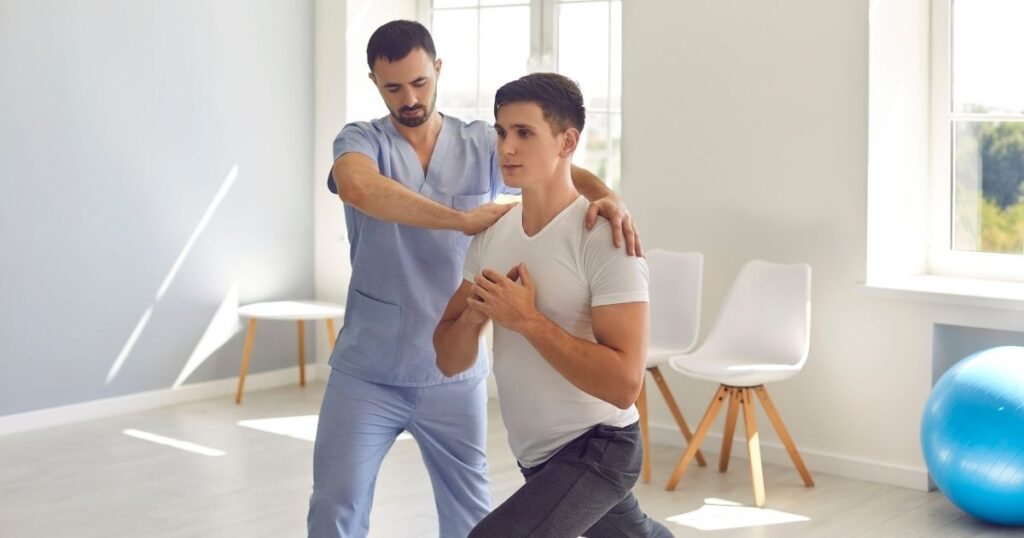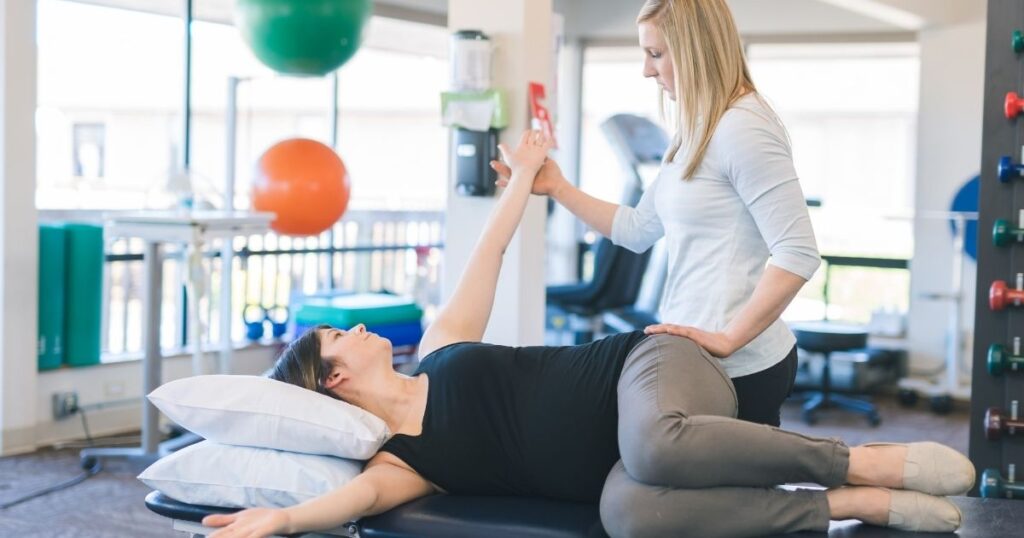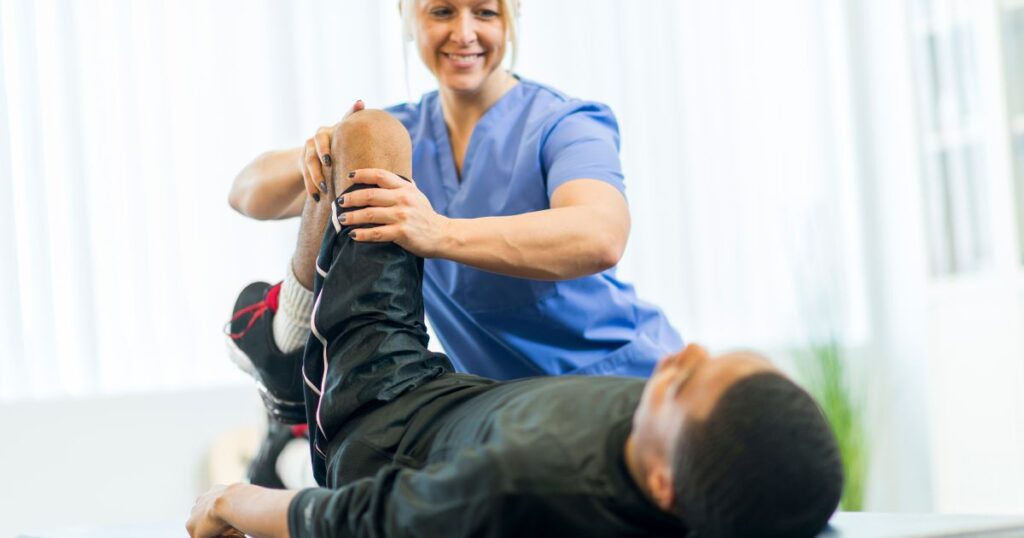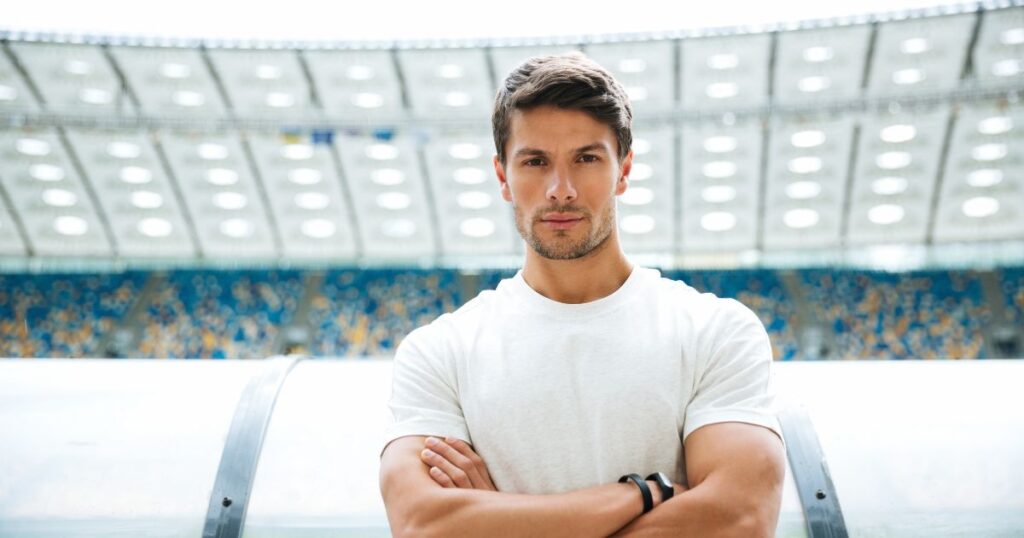Physical Therapy Options for Former Athletes in Nebraska: Local Resources
If you played sports in your younger days, you know the physical demands of your athletic career can leave a lasting impact long after you’ve hung up your jersey. You may find yourself navigating daily life with chronic pain or limited mobility from old sports injuries.
The Nebraska Greats Foundation is committed to supporting the quality of life for former athletes like you after your playing days are over. We’ll discuss how physical therapy for athletes can be a powerful tool for recovering from those lingering injuries – the ones you earned on the field, the court, or the track.

Common Injuries Faced by Retired Athletes
The type of injuries former athletes sustain often depends on their sport. Overuse injuries are common across the board, with repetitive motions leading to problems like tendonitis, stress fractures, and bursitis. Contact sports often cause concussions, ligament tears (like ACL tears), and joint dislocations.
Even after seemingly healing from these injuries, former athletes may experience lingering pain, stiffness, and reduced range of motion. These issues can significantly impact their ability to stay active, participate in recreational activities, and maintain a healthy lifestyle. This is where physical therapy for athletes becomes essential.

Benefits of Physical Therapy for Former Athletes
Physical therapy offers a wide range of benefits for previous sports injuries, including:
- Pain Management and Reduction: Physical therapists use various techniques to help manage and reduce pain, including manual therapy, therapeutic exercises, and modalities like heat and ice.
- Improved Mobility and Flexibility: Targeted exercises and stretches can help improve range of motion, flexibility, and joint function.
- Injury Recovery and Rehabilitation: Physical therapy is crucial for recovering from sports-related injuries to regain strength, stability, and function.
- Strength and Conditioning: Physical therapists can design customized strength and conditioning programs to help former athletes maintain fitness and prevent muscle imbalances.
- Prevention of Future Injuries: Physical therapy can help reduce the risk of future injuries by addressing underlying weaknesses and imbalances.
- Improved Quality of Life: Ultimately, physical therapy helps former athletes improve their overall quality of life by reducing pain, increasing mobility, and enabling them to participate in the activities they love.

How the Nebraska Greats Foundation Assists Former Athletes
The Nebraska Greats Foundation is a non-profit organization that supports the medical needs of Nebraska athletes facing financial hardship. We were created after our founder, Jerry Murtaugh, was moved by the stories of two former Husker football players who had become seriously ill later in their lives but were unable to afford the medical care they needed.
Physical therapy is just one of the many medical services our grants cover. Our team works with athletes to find physiotherapy options for their health and budget needs. Whether an athlete returns to competition or retires from their sport, a sports injury should not limit a person’s quality of life.

Areas of Physical Therapy for Sports Injuries
There isn’t just one kind of physical therapy you can seek for an old football or track injury. Because sports injuries are so varied, different types of physical therapy are available for an injury you suffered during an athletic activity.
- Sports medicine physical therapy: This is a specialized area within sports physical therapy that addresses the specific needs of athletes.
- Orthopedic physical therapy: There’s a significant overlap between sports physical therapy and orthopedic physical therapy because sports injuries often involve the musculoskeletal system.
- Neurological and pediatric physical therapy: Although neurological and pediatric physical therapy are distinct fields, some techniques, like balance training, can be valuable in sports rehabilitation.

Physical Therapy Provider Options in Nebraska
There are also different types of providers that a former athlete may see for physical therapy services. Some treatments are available through any physical therapy provider, whereas others use highly specialized techniques or equipment, limiting their availability.
Nebraska offers a variety of physical therapy options for former athletes, including:
Specialized Sports Physical Therapy Clinics
These clinics focus on sports-related injuries and rehabilitation, with therapists who are experts in treating athletes. They often have specialized equipment and programs tailored to athletes’ specific requirements and goals, leading to faster and more effective recovery.
Hospital-Based Physical Therapy Programs
Hospitals often have comprehensive physical therapy departments that offer a wide range of services. This can be preferable for athletes with complex injuries or those requiring multidisciplinary care. It’s important to contact the specific hospital or clinic to inquire about their programs and whether they meet your individual needs.
Private Practices
Private practices offer personalized care and one-on-one attention from a physical therapist. This can be a good option for athletes who prefer a more individualized approach. Many excellent private physical therapy practices in Nebraska are qualified to treat your specific needs. Contact your insurer or Department of Health to learn more about providers in your area.
Sports Physical Therapy Goals and Techniques
Physical therapy for athletic injuries is intended to accomplish specific goals. Even if an athlete has retired from their sport, participating in sports physiotherapy with these goals in mind will improve their quality of life after sports.
Injury Recovery and Rehabilitation
This is the cornerstone of sports physical therapy. It addresses specific sports-related injuries like sprains, strains, and fractures to restore function, strength, and stability. Therapists use a combination of manual therapy, therapeutic exercises, and modalities to help athletes recover.
Injury Prevention
This is a key aspect of sports physical therapy that takes a proactive approach to minimizing the risk of future injuries. Therapists conduct thorough movement assessments to pinpoint harmful movement patterns and muscle imbalances. They then use this information to create corrective exercise programs and promote healthy exercise habits.
Performance Enhancement
Performance enhancement in sports physical therapy focuses on helping patients achieve their peak physical potential. This involves creating individualized strength and conditioning programs.
Specific Techniques in Sports Physiotherapy
Physiotherapy techniques range from manual manipulation to using sophisticated technology. The following may be part of a former athlete’s treatment plan:
- Manual Therapy: A broad category that includes various hands-on techniques to address soft tissue restrictions, joint mobility, and pain. Examples include:
- Soft tissue mobilization: Addressing muscle tension, scar tissue, and fascial restrictions.
- Joint mobilization: Restoring optimal joint movement and mechanics.
- Dry Needling: Inserting thin needles into muscles to release tension, reduce pain, and promote healing.
- Kinesiotaping: Applying elastic tape supports muscles, improves circulation, and reduces pain.
- Instrument-Assisted Soft Tissue Mobilization (IASTM): Using tools to address soft tissue restrictions and promote healing.
- Aquatic Therapy: Performing exercises in water to reduce joint stress, improve muscle strength and endurance, and enhance cardiovascular fitness.
- Electrical Stimulation: Using electrical currents to manage pain, reduce inflammation, and stimulate muscle contractions.
- Ultrasound Therapy: Using sound waves to generate deep heat, increase blood flow, and promote tissue healing.

There is Life After Athletics
Sometimes, awards and great memories aren’t the only things that stay with athletes after they leave the playing field–some sports injuries can take years to heal. Fortunately, many Nebraska physical therapy options for retired athletes offer support for pain management, injury recovery, and maintaining an active and healthy lifestyle.
If you are a former Nebraska athlete who needs assistance finding or paying for physical therapy resources, contact the Nebraska Greats Foundation. We can connect you with skilled therapists to provide the treatment you need and even provide financial assistance if you qualify for one of our grants.
